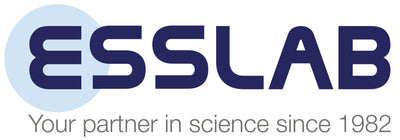Pure Chlorite Standard Developed
- Home
- Pure Chlorite Standard Developed
- Inorganic Ventures Tech Centre
- Technical Papers
- Pure Chlorite Standard Developed
Pure Chlorite Standard Developed
High-purity sodium chlorite (NaClO2) is not (as of November 2002) commercially available by any manufacturer other than Inorganic Ventures. Its potential explosive instability makes it one of the most difficult anions to manufacture. Our in-house method for purification of the technical grade (approx. 80%) sodium chlorite was developed at our facilities between 1998 and 2001. The final product is a Certified Reference Material that is certified by Iodometric Titration and ion chromatography. Currently, we have one year of stability data on the first lot of 1K ClO2- and our study is ongoing.
Chloride Purification Levels
The difference in the chloride level before and after purification of the NaClO2 is illustrated below in chromatograms I and II.

| KEY - Chromatograms I & II | |
| Instrument | Dionex DX-120 Ion Chromatograph |
| Column | IonPac AS14 4mm |
| Anion Self-Regenerating Suppressor | ASRS-ULTRA 4mm |
| Eluent | 2.7mM Na2CO3 1.0mM NaHCO3 |
| Flow Rate | approx. 1.2mL/min |
| Scale | Y-axis 1000mV = 10µS scale X-axis = minutes |
| Concentration | approx.20µg/g ClO2- |

Certification
A. Total chloride determination: Treating ClO2- with Sulfurous Acid reduces the ClO2- to Cl- and it makes measuring the total Cl- content (ClO2- and Cl-) possible by Ion Chromatography. See Chromatogram III below.
Chemistry:
| KEY - Chromatogram III | |
| Instrument | Dionex DX-120 Ion Chromatograph |
| Column | IonPac AS14 4mm |
| Anion Self-Regenerating Suppressor | ASRS-ULTRA 4mm |
| Eluent | 2.7mM Na2CO3 1.0mM NaHCO3 |
| Flow Rate | approx. 1.2mL/min |
| Scale | Y-axis 1000mV = 10µS scale X-axis = minutes |
| Concentration | approx.20µg/g Cl- |
This method measures the ClO2- and Cl- content together. As it is visible on Chromatogram II (~20µg/g ClO2- made from NaClO2 after purification) there is still a small amount of Cl- left in the material.
B. Chlorite determination: Iodometric titration in the presence of starch indicator versus a standard Thiosulfate (S2O3-2) solution (standardized vs. NIST SRM 136e Potassium Dichromate).
Chemistry:
ClO2- + 4I- + 4H+Cl- + 2H2O + 2I2
2I2 + 4S2O3-24I- + 2S4O6-2
Note that this method measures only the ClO2- content.
C. Chloride level: (using collected data)
- The ClO2- level obtained from method B (iodometric titration) is 983 µg/mL. This is equivalent to 983 * 0.5256 = 516.66 µg/mL Cl-.
The total Cl- level obtained from method A is 525.33 µg/mL Cl-. The difference of the total Cl- level (525.33) and the ClO2- as Cl- (516.66) gives the Cl- level in the purified ClO2- lot which in this case is 8.67 9 µg/mL.
9 µg/mL.
- Another way of determining the Cl- level in the ClO2- solution is to dilute sample with deionized water and compare to a known concentration (Cl- NIST SRM 3182). See Chromatogram IV and conditions below.
If 1.0mM NaHCO3 is used as eluent, the separation of ClO2- and Cl- is better.

| KEY - Chromatogram IV | |
| Instrument | Dionex DX-120 Ion Chromatograph |
| Column | IonPac AS14 4mm |
| Anion Self-Regenerating Suppressor | ASRS-ULTRA 4mm |
| Eluent | 1.0mM NaHCO3 |
| Flow Rate | approx. 1.2mL/min |
| Scale | Y-axis 1000mV = 10µS scale X-axis = minutes |
| Concentration | approx.20µg/g ClO2- |
Results obtained from C-1 and C-2 (two different methods) above agree with one another and no other peaks are detected in the chromatogram IV. Thus, it is safe to assume that there are no other species containing Cl (ClO3-, ClO4- ,ClO2, ClO-, Cl2) in our ClO2- CRM solution and our methodology is accurate.
Related Anions
In addition to chlorite (EPA methods 300.1, 317.1, 325.0), our facility also manufactures bromate (EPA methods 300.1, 317.1, 321.8, 325.0) and bromide (EPA methods 300.1, 317.1, 325.0), both of which are included in the group of Disinfectants and Disinfection Byproducts Anions.
-
WHAT ARE YOU LOOKING FOR?Search
- Login / Register
- Reference Materials
- Liquid Handling
- Chromatography and Spectroscopy
- Testing
- Labware
- Resources
- Wishlist (0)
- Compare (0)
- Contact Us
